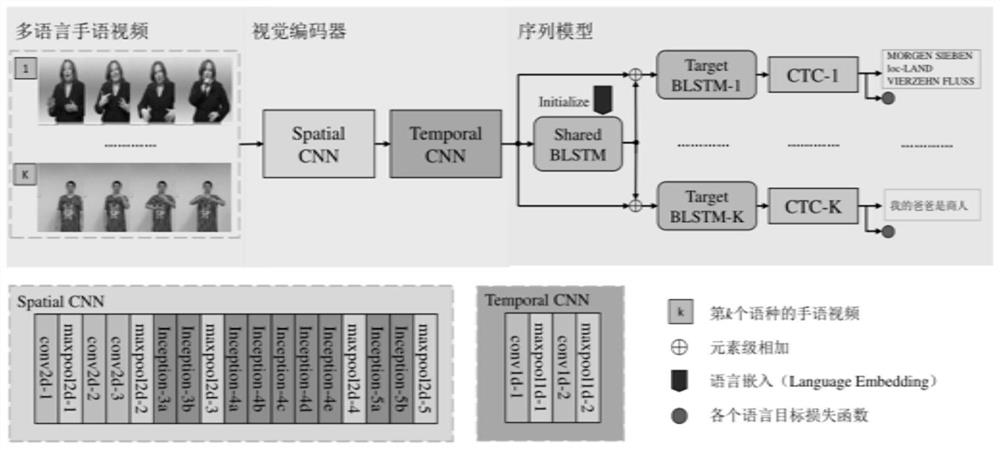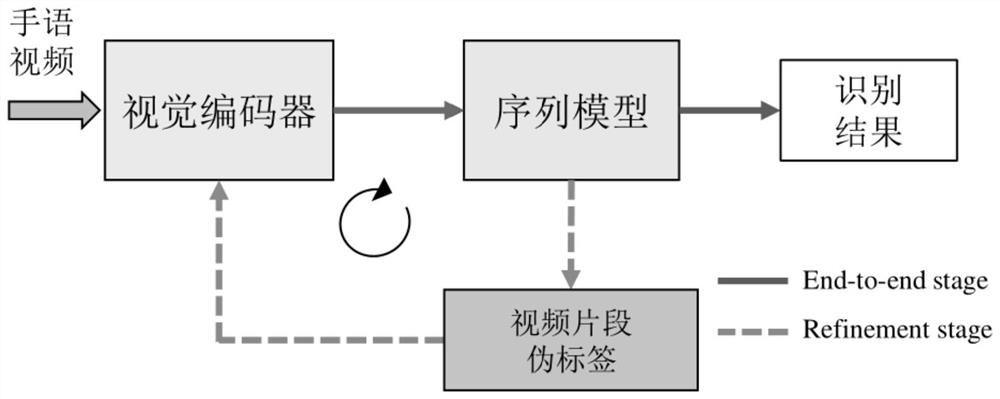Continuous sign language recognition system based on multi-language cooperation
A recognition system, multi-language technology, applied in character and pattern recognition, instruments, biological neural network models, etc., can solve problems such as unfavorable sign language commonality and mining, and achieve the effect of improving sign language recognition performance
- Summary
- Abstract
- Description
- Claims
- Application Information
AI Technical Summary
Problems solved by technology
Method used
Image
Examples
Embodiment Construction
[0021] The technical solutions in the embodiments of the present invention will be clearly and completely described below in conjunction with the accompanying drawings in the embodiments of the present invention. Obviously, the described embodiments are only some of the embodiments of the present invention, not all of them. Based on the embodiments of the present invention, all other embodiments obtained by persons of ordinary skill in the art without making creative efforts belong to the protection scope of the present invention.
[0022] Most of the existing sign language recognition frameworks only recognize a single sign language, and different sign languages have shared visual patterns. Using different sign language data sets to train multiple independent models will ignore the commonality between different language sign languages. The present invention expresses the same visual pattern between different sign language languages through a shared time sequence encoder, a...
PUM
 Login to View More
Login to View More Abstract
Description
Claims
Application Information
 Login to View More
Login to View More - R&D
- Intellectual Property
- Life Sciences
- Materials
- Tech Scout
- Unparalleled Data Quality
- Higher Quality Content
- 60% Fewer Hallucinations
Browse by: Latest US Patents, China's latest patents, Technical Efficacy Thesaurus, Application Domain, Technology Topic, Popular Technical Reports.
© 2025 PatSnap. All rights reserved.Legal|Privacy policy|Modern Slavery Act Transparency Statement|Sitemap|About US| Contact US: help@patsnap.com



